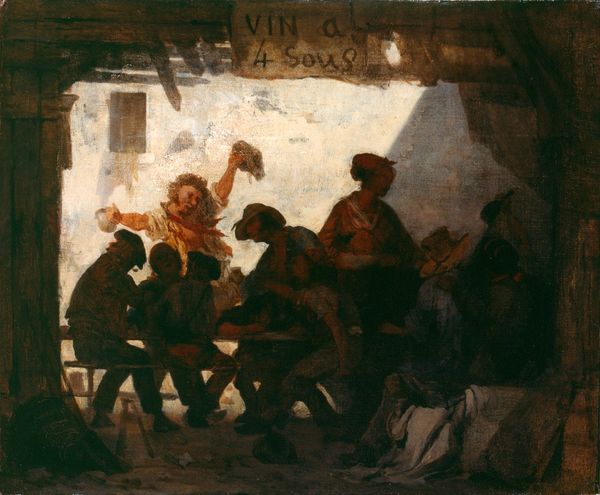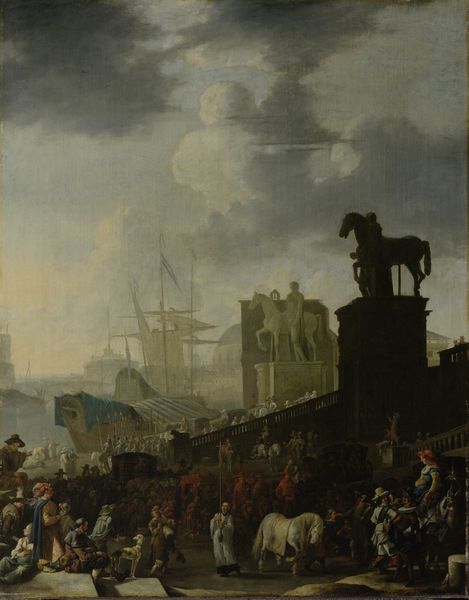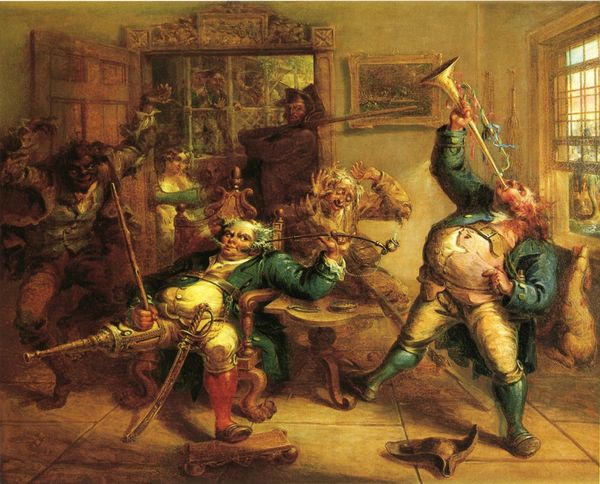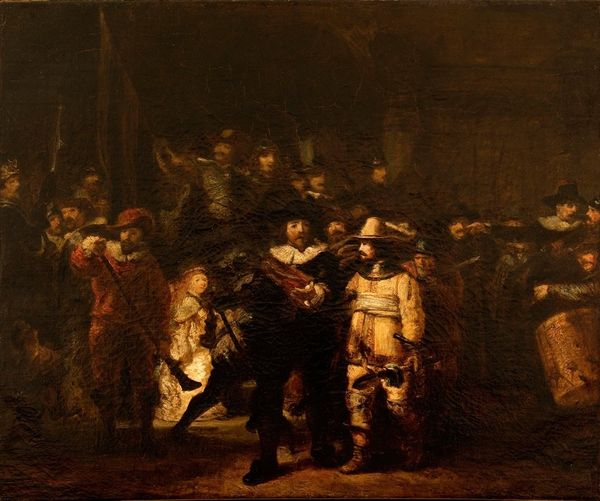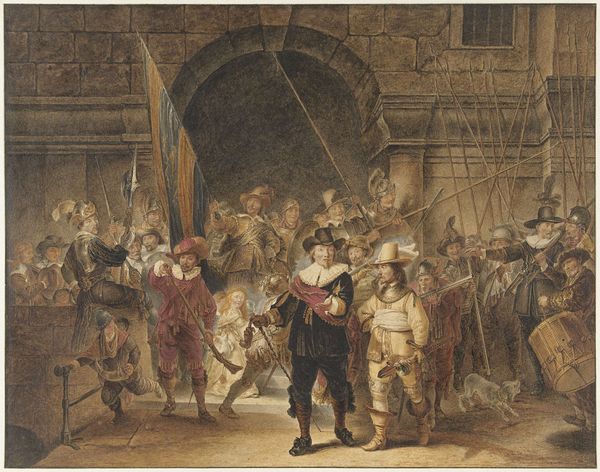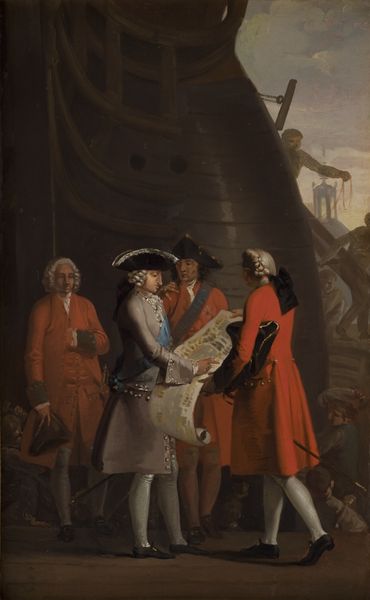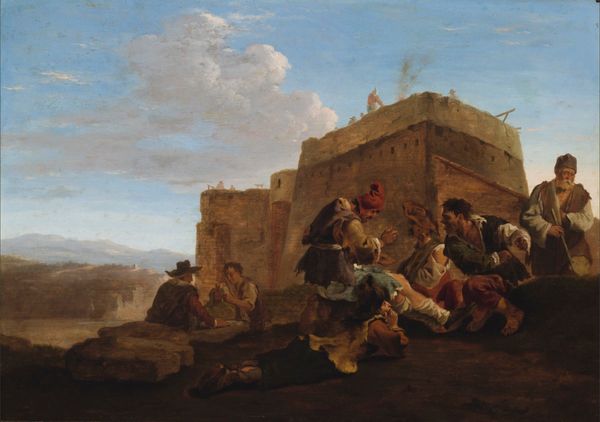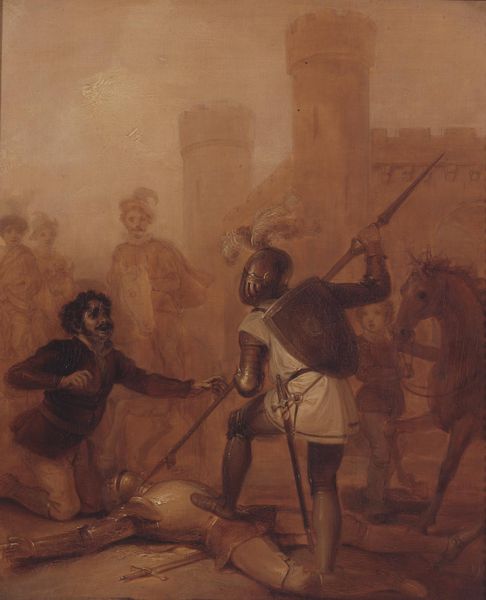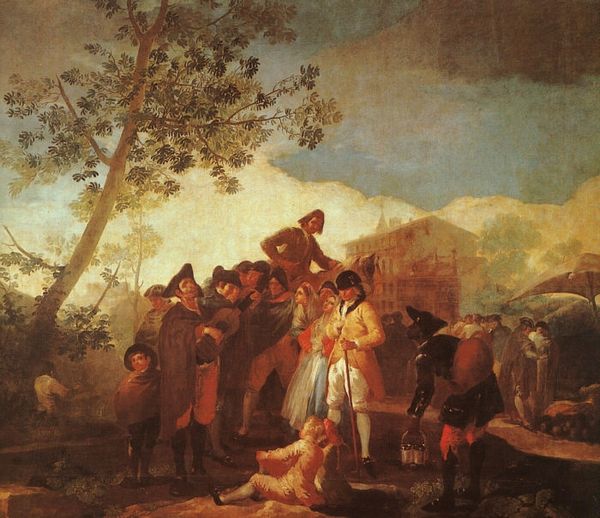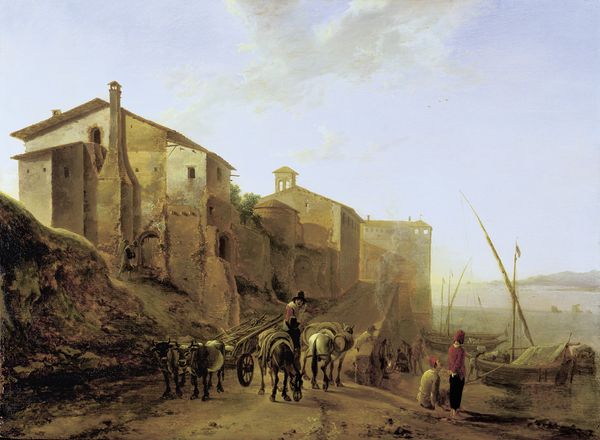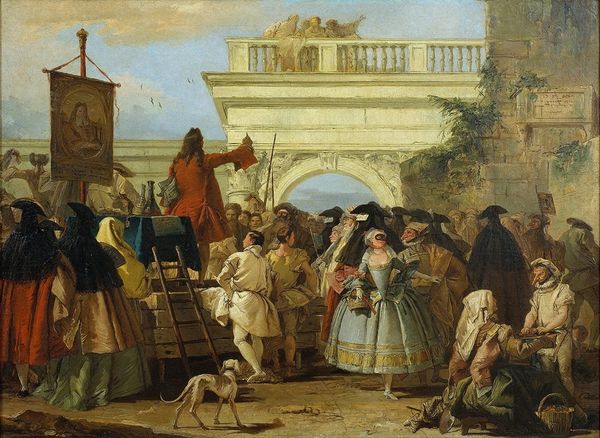
Dimensions: 258 x 218 cm
Copyright: Public domain
Curator: Today we’re looking at “The Fair at Madrid,” a painting completed by Francisco de Goya in 1779. Goya really captures a moment in time in this oil painting. Editor: You know, my immediate reaction is...hustle. The figures are moving so urgently. I almost feel out of breath looking at it! Curator: Exactly! Goya’s Madrid was one of social hierarchies and power dynamics, where appearance played a significant role. The well-dressed figures seem to be stepping right out of that carriage, embodying aristocratic privilege. The work also has a narrative component and belongs in genre and history painting simultaneously, because of the chosen topic and approach to it. Editor: It's funny you mention the aristocracy because, to me, there's a subtle mockery there, an almost satirical feel about the work. Those clothes, those poses, they seem a bit too much, don’t you think? Almost caricatures of themselves? Curator: I think that speaks to Goya's evolving political conscience, but also his ability to capture the nuances of a society ripe with contradictions. Goya accepted commissions from wealthy patrons, like the Royal Tapestry Factory. The series of paintings from the factory serve to illustrate everyday life but also serve as records of inequality and shifting values. Editor: It does have a chaotic element. I'm drawn to the energy—it's vibrant, though perhaps uneasily so. Is that what the tapestry tried to convey? Did people understand it, back in the 18th century? Curator: I'd argue that Goya was laying the groundwork for future societal and political reform, using art as a mirror to reflect these concerns. It is fascinating to see what an art work can communicate at a given time and later become to different generations. Editor: Absolutely, it reminds us that every artwork has the potential to take on many lives throughout its journey in art history. Well, it's definitely given me food for thought! Curator: Agreed, this is truly an engaging and deeply meaningful work, open for any form of interpretations to come.
Comments
No comments
Be the first to comment and join the conversation on the ultimate creative platform.
